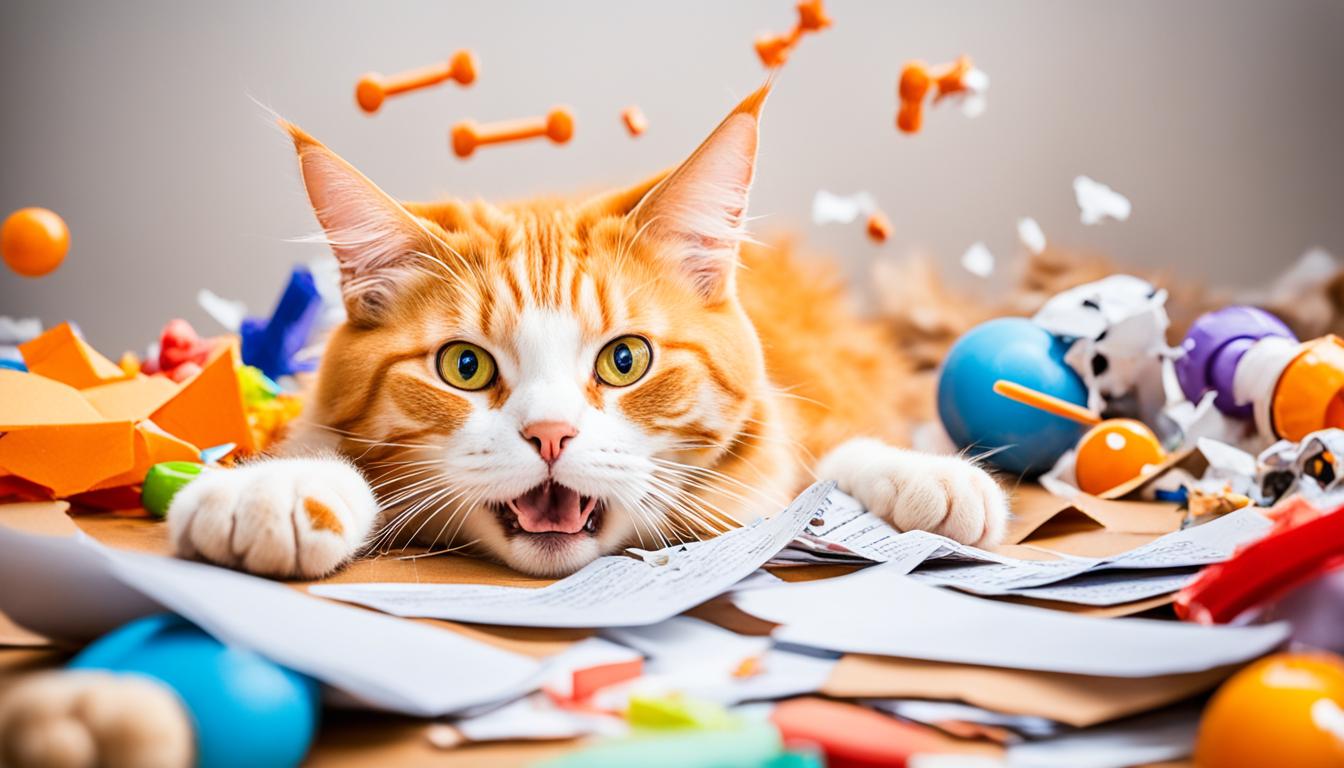Introduction to Cat Mating Behavior

Have you ever wondered how our feline friends find their perfect match? Cat mating behavior is a complex yet fascinating aspect of their lives. From unique courtship rituals to the biology behind their reproduction, understanding this behavior can deepen our appreciation for these charming creatures. Let’s dive into the intricate world of cat mating and explore some surprising insights!
Also Read This: Is There an App to Download Dailymotion Videos? A Guide to Legal Downloading Tools
The Mating Cycle of Cats
The mating cycle of cats is a captivating process, influenced by their biology and environment. It typically consists of several stages, each playing a crucial role in reproduction.
Here’s a breakdown of the key phases:
- Proestrus: This is the initial stage that lasts about 1 to 2 days. During this phase, female cats may display affectionate behavior, rubbing against objects and even rolling on the floor. However, they are not yet receptive to mating.
- Estrus (Heat): This is where things get really interesting! A female cat will enter her heat cycle approximately every 2 to 3 weeks during breeding season, which can extend from spring to fall. Signs of being in heat include loud vocalizations, restlessness, and an increased desire for attention. Female cats may also adopt a specific mating posture known as lordosis, where they raise their hindquarters and tread with their front paws.
- Mate Selection: Male cats often engage in competitive behaviors to win over a female. They may exhibit territorial behaviors, such as marking their territory with scent and engaging in vocalizations. Once a female is receptive, she will choose her mate, often based on scent and displays of strength.
- Mating: The actual mating process can be quite aggressive. Male cats have barbed penises, which can cause discomfort to the female, leading her to yowl during copulation. This might sound harsh, but it’s a natural part of their reproductive process. Mating can occur multiple times over several days to ensure successful fertilization.
- Post-Mating: After mating, the female cat may exhibit behavioral changes such as increased grooming or seeking solitude. If she has been successfully fertilized, she will not go back into heat until after the kittens are born.
Understanding the mating cycle of cats helps us appreciate their natural instincts and behaviors. It’s a reminder of the intricate balance of nature and the remarkable ways in which these animals reproduce and thrive. Whether you’re a seasoned cat owner or just curious about feline behavior, knowing more about this process enriches our connection with these enigmatic companions.
Also Read This: Ultimate Guide to Making Money with Dailymotion Videos and Channels
3. Signs That a Cat Is in Heat
When your feline friend enters the mating season—a phenomenon often referred to as "being in heat" or "estrus"—it can be quite noticeable! Understanding these signs is crucial for cat owners, especially if you’re not planning on breeding your kitty. Here are some common indicators:
- Vocalization: One of the most prominent signs is a significant increase in vocal sounds. Your cat might start meowing loudly, yowling, or even making unique sounds that you’ve never heard before. This is her way of attracting potential mates.
- Affectionate Behavior: Cats in heat often become extremely affectionate. You might notice your cat rubbing against furniture, your legs, and even rolling on the floor. This behavior is instinctual, as she’s trying to show her availability.
- Posturing: A female cat in heat will frequently adopt a specific mating posture known as lordosis. This involves raising her hindquarters while lowering her front. If you see this, she’s signaling readiness for mating.
- Increased Restlessness: Cats may exhibit signs of restlessness or anxiety. You might find her pacing around the house or trying to escape outdoors. This is due to her heightened drive to find a mate.
- Spraying: Sometimes, a female cat will spray urine as a way to mark her territory and signal to male cats that she is in heat. This can be quite a surprise for many cat owners!
Being aware of these signs can help you manage your cat's behavior better during this period. If you're not planning to breed her, consider discussing spaying options with your veterinarian to help alleviate these symptoms and prevent unwanted litters.
Also Read This: How to Make Crepe Paper Flowers Easy Crafting Ideas on Dailymotion
4. How Cats Choose Their Mates
The process by which cats select their mates is as intriguing as it is instinctual. Unlike many other animals, felines have a unique approach to courtship and mate selection. Here’s a closer look at how it all works:
- Territory and Presence: Male cats often establish territories that they defend vigorously. When a female is in heat, males from surrounding areas will come to investigate her scent. Cats are generally attracted to mates that have a strong presence and territory, as it signifies strength and genetic fitness.
- Feline Pheromones: Cats communicate a lot through scent. A female in heat releases pheromones that signal to males she’s ready to mate. Males can detect these scents from quite a distance, often leading them to compete for her attention.
- Behavioral Displays: During the mating season, males will often showcase their prowess through various behaviors. This can include vocalizing, posturing, and even fighting with other males to prove their dominance and fitness as a mate. The more confident and assertive a male appears, the more attractive he may be to females.
- Genetic Quality: Female cats are believed to have an instinctual preference for males with favorable genetic traits. This can mean selecting mates that are healthy, well-fed, and show signs of good grooming. It’s all about ensuring the best chance for healthy offspring!
- Multiple Partners: Interestingly, female cats are often not monogamous. They may mate with multiple males during their heat cycle, which increases genetic diversity among their kittens. This can also help to ensure that she has healthy offspring, as the strongest males will be the ones that mate.
Understanding how cats choose their mates can offer insight into their natural behaviors and instincts. Whether you’re a cat owner or simply a cat enthusiast, recognizing these mating dynamics can enhance your appreciation for these fascinating creatures!
Also Read This: Does Dailymotion Provide Superior Features with a Subscription?
5. The Role of Vocalizations in Cat Mating
When it comes to feline communication, vocalizations play a critical role, especially during the mating season. Have you ever heard that distinctive yowling or caterwauling outside your window at night? That’s not just a random serenade; it’s a deeply ingrained behavior tied to their mating rituals.
Female cats, or queens, are known to be quite vocal when they are in heat. They emit loud calls that can travel long distances, signaling their availability to male cats. This is not just a casual "hello"; it’s a siren call designed to attract potential mates. Interestingly, the pitch and tone of their cries can vary significantly, often becoming more intense as they approach the peak of their heat cycle.
Male cats, or toms, aren't shy about joining in on the vocal fun. When they catch wind of a female in heat, their vocalizations become equally pronounced. Toms may respond with deep, rumbling growls or even soft chirps, all part of their courtship display. It’s like a feline duet, with each participant contributing to the mating process through sound.
Vocalizations serve multiple purposes in cat mating:
- Attracting Mates: Queens' calls draw toms from afar, while toms' responses show their interest.
- Establishing Dominance: Vocalizations can indicate a tom's strength and dominance, which can be attractive to females.
- Communication of Intent: The sounds can signal a cat's readiness or willingness to mate, reducing confusion in the heat of the moment.
Moreover, vocalizations can also reflect a cat's emotional state. A queen in heat might sound anxious or distressed, indicating her strong desire for a mate. This emotional connectivity through sound can deepen the bond between a pair during mating.
Also Read This: How to Apply Mascara and Eyeliner for a Bold Look on Dailymotion
6. Post-Mating Behavior in Cats
After the mating process, it's fascinating to observe how cats behave. Unlike many other animals, cats exhibit some unique post-mating rituals that highlight their complex social structures and instincts.
First off, let’s talk about the immediate aftermath of mating. Female cats often engage in what’s known as the "post-mating grooming" phase. After copulation, queens will meticulously groom themselves, a behavior that serves both hygienic and psychological purposes. This grooming process can also be a way to calm themselves after the intense experience of mating.
Interestingly, female cats may also display a temporary aggression towards their male partners right after mating. This can be attributed to the fact that the mating process in cats can be a bit rough. The male has barbed spines on his penis, which helps induce ovulation in the female but can also lead to discomfort. As a result, queens might swat or hiss at the tom as a way of asserting their space. It’s a fascinating blend of instinct and emotion!
On the other hand, male cats tend to act a bit aloof post-mating. After mating, a tom may wander away, often looking for a peaceful spot to nap. This behavior can be linked to their natural instinct to avoid the female until she has fully recovered and is ready for another mating opportunity. It’s as if they’re saying, “I did my part; now it’s time to rest.”
Here are a few interesting behaviors often observed post-mating:
- Grooming: Both sexes will engage in grooming, promoting cleanliness and comfort.
- Seeking Solitude: Males often retreat, while females may seek quiet spots to rest.
- Increased Affection: Sometimes, post-mating can lead to increased bonding behavior, with mutual grooming and cuddling.
Understanding these behaviors not only gives us insight into the mating habits of cats but also highlights the intricate dynamics of their interactions. Whether it’s the vocal serenade or the post-mating rituals, every aspect of cat mating is full of surprises!
Also Read This: Adding Subtitles to Dailymotion Videos for Better Understanding
7. Common Misconceptions About Cat Mating
When it comes to cat mating, there are plenty of myths that can create confusion for cat owners and enthusiasts alike. Let’s debunk some of the most common misconceptions to give you a clearer understanding of our feline friends' reproductive behaviors.
Myth 1: Cats Only Mate in the Spring
While it's true that many cats tend to mate in the spring when the days get longer, this isn't a hard and fast rule. Cats can actually reproduce year-round, especially in warmer climates. So, don’t be surprised if you notice cat mating behaviors outside the typical season.
Myth 2: Female Cats Will Only Mate Once
This one is particularly misleading. A female cat, also known as a queen, can go into heat multiple times during the breeding season and will mate with several males if given the chance. In fact, she may mate with multiple partners in a single heat cycle, which can lead to a diverse litter of kittens!
Myth 3: Cats Have a Long Gestation Period
Many people believe that cats have a long gestation period similar to dogs, but that's not the case. The average gestation for a cat is around 63 to 65 days. This relatively short period allows for more frequent litters, which is part of why cat populations can grow so quickly.
Myth 4: Neutering Stops All Sexual Behavior
Neutering does significantly reduce sexual behaviors in male cats, but it doesn't completely eliminate them. Some behaviors may linger, especially if the cat was neutered later in life. Additionally, it’s important to note that neutering contributes to better health and can reduce unwanted litters.
Myth 5: Male Cats Always Fight Over Females
While it’s true that male cats can sometimes be aggressive during mating season, it’s not a universal truth. Many male cats exhibit a range of behaviors, from territoriality to sociability. In fact, some may even tolerate each other quite well, especially if they are familiar with one another.
By understanding these misconceptions, cat owners can make more informed decisions regarding their pets’ health and breeding. Knowledge is power, after all!
8. Conclusion: The Fascinating World of Cat Reproduction
In conclusion, the world of cat reproduction is as complex as it is fascinating. From the unique mating rituals to the intriguing behaviors exhibited by both males and females, there's so much to learn. Here are a few key takeaways:
- Cats Are Seasonal Breeders: Understanding their breeding cycles can help you manage your pet's health effectively.
- Neutering is Beneficial: Not only does it prevent unwanted litters, but it also promotes better health and behavior.
- Each Cat is Unique: Just like people, each cat has its own personality, which can influence its behavior during mating.
Whether you're a lifelong cat lover or just starting to explore the world of feline reproduction, the more you know, the better you can care for your furry friends. By appreciating the natural instincts and behaviors of cats, you can foster a healthier and happier environment for them. So, embrace the quirks and charm of these creatures, and let their fascinating world enrich your life!
 admin
admin








